Hair Transplant in Tijuana
Search and Compare the Best Clinics and Doctors at the Lowest Prices for Hair Transplant in Tijuana
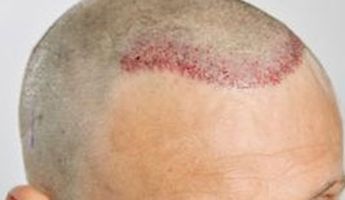
Find the best clinics for Hair Transplant in Tijuana
With Medijump you can browse 8 facilities offering Hair Transplant procedures in Tijuana. The cheapest price available is $2,063 in Monterrey
Hair Transplant in Mexico
Price: $ 2,063
Hair Transplant in Monterrey
Price: $ 2,063
Hair Transplant in Cancun
Price: $ 2,368
Egypt offers the best prices Worldwide
Price: $ 126
From 30 verified reviews
Michael Vitali, 17 September 2020
Staff was awesome, hair looks great!! Thanks Dr. Georgina!!
From 42 verified reviews
jackie perez, 17 August 2020
I was so scared to do breasts implants and i will never thought i will do it in tj.but omg i had Sergery at 12 and i was aready walking out by 5. Dr Mauel did a wonderful job.i love my breast. Not in a lot of pain.i cant belive it. All the Dr there and the nurses where so sweet and the made shore to keep a eye on me. They realy kater to my needs. Im going back for a tummy tuck..love this place. Its july 10 2020.i think this is the best thing that happened to me all year. Thank you dr Mauel Gutierrez and all staff..💗💋😊
From 12 verified reviews
GABRIEL RODRIGUEZ, 16 September 2019
Without a doubt, the best dermatologist! Thank you Dra Sara for your dedication and patience for treating each of your patients with love, thank you for helping me to solve the problem for having trusted other dr who are not prepared and are not what they say to be called, Thanks for your experience. scars and my spots my face is much better. She explains every doubt and every option. Without a doubt, Dr. Sara, Director of the Dermatology School, with her experience and humble treatment, will be delighted. I recommend it you will not regret! Thanks Dra Sara
Renovate Medical Center, located in Diego Rivera, Tijuana, Mexico offers patients Hair Transplant procedures among its total of 19 available procedures, across 4 different specialties. Currently, there's no pricing information for Hair Transplant procedures at Renovate Medical Center, as all prices are available on request only, whilst the national average price is approximately $2,671. All procedures and treatments are undertaken by the lead specialist at the Hospital, and they are not accredited by any recognized accreditations institutes
Gardel Plastic Surgery Institute, located in Diego Rivera, Tijuana, Mexico offers patients Hair Transplant procedures among its total of 58 available procedures, across 5 different specialties. Currently, there's no pricing information for Hair Transplant procedures at Gardel Plastic Surgery Institute, as all prices are available on request only, whilst the national average price is approximately $2,671. All procedures and treatments are undertaken by just a small team of specialists, with 2 in total at the Hospital, and they are accredited by ISHRS - International Society of Hair Restoration Surgery
Rejuvenece Center of Plastic Surgery, located in Diego Rivera, Tijuana, Mexico offers patients Hair Transplant procedures among its total of 28 available procedures, across 3 different specialties. Currently, there's no pricing information for Hair Transplant procedures at Rejuvenece Center of Plastic Surgery, as all prices are available on request only, whilst the national average price is approximately $2,671. All procedures and treatments are undertaken by the lead specialist at the Hospital, and they are not accredited by any recognized accreditations institutes
Splendhere Unidad Quirúrgica, located in Diego Rivera, Tijuana, Mexico offers patients Hair Transplant procedures among its total of 27 available procedures, across 4 different specialties. Currently, there's no pricing information for Hair Transplant procedures at Splendhere Unidad Quirúrgica, as all prices are available on request only, whilst the national average price is approximately $2,671. All procedures and treatments are undertaken by the lead specialist at the Hospital, and they are not accredited by any recognized accreditations institutes
Cosmetic Body and Health, located in Diego Rivera, Tijuana, Mexico offers patients Hair Transplant procedures among its total of 18 available procedures, across 4 different specialties. Currently, there's no pricing information for Hair Transplant procedures at Cosmetic Body and Health, as all prices are available on request only, whilst the national average price is approximately $2,671. All procedures and treatments are undertaken by the lead specialist at the Hospital, and they are not accredited by any recognized accreditations institutes
Compare Before & After Photos of _procedure_photos.phpHair Transplant
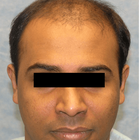
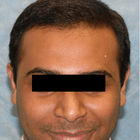
Front view
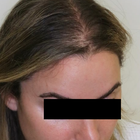
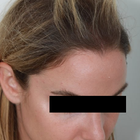
Half-side view
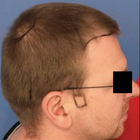
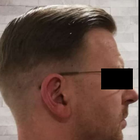
Full-side view
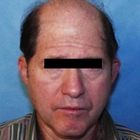
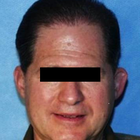
Front view
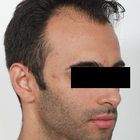
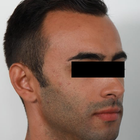
Half-side view
WHY US?
At Medijump, we're making medical easy. You can search, compare, discuss, and book your medical all in one place. We open the door to the best medical providers worldwide, saving you time and energy along the way, and it's all for FREE, no hidden fees, and no price markups guaranteed. So what are you waiting for?

Free

Best Price

Widest Selection

Risk-Free
What you need to know about Hair Transplant in Tijuana

Hair Transplantation, also known as hair restoration surgery, is the surgical process of moving hair follicles from one part of the body that is rich in hair (known as a donor site) and embedding them at the the bald area of the head (recipient site). The medical course of action that aims at addressing hair loss issues and improving aesthetics. While there are many causes of hair loss, the most common reason, especially for men, is genetics. Hereditary hair loss as men age is the number one leading factor of baldness.
It is a minimally invasive procedure, performed under local anesthetic and is most commonly used to treat male baldness, but the technique can also be used to restore eyelashes, eyebrows, beard hair and to fill in scars. The procedure usually lasts between 4 to 8 hours, depending on the number of grafts needed. This procedure is a long-term solution to hair loss, with most patients experiencing significant improvement in hair growth after six months to a year.
Why do people experience hair loss?
We lose an average of 100 hairs a day, however, these hairs are immediately replaced by new hairs growing at the same time. Hair loss can occur suddenly or gradually and it may affect your scalp or your entire body, depending on what’s causing it. Other causes of hair loss may include:
- Stress - a lot of people may experience hair thinning for several months due to a physical or emotional shock. However, this type of hair loss is only temporary.
- Certain Hairstyles and treatments - hairstyles that pull your hair like tight pigtails, ponytails or braids can actually cause traction alopecia. Permanent hair treatments and hot oil treatment may also lead to hair loss; these hair treatments cause inflammation to the hair follicles. If there is scarring, hair loss may be permanent.
- Radiation Therapy - for example, during cancer treatment.
- Certain medical conditions and hormonal changes - in women, hormonal changes due to pregnancy, childbirth menopause or thyroid problems may cause temporary or permanent hair loss. As for medical conditions, hair loss may be due to alopecia, scalp infections like ringworm or a hair-pulling disorder known as trichotillomania.
Sudden hair loss may also be a sign of a specific medical condition that will require treatment. You will need to consult your doctor if you experience more than your usual hair loss whenever you are combing or washing your hair and also if you encounter a sudden patchy loss of hair.
A hair transplant is a common treatment performed on people who are experiencing baldness due to aging and heredity factors. However, if you are completely bald with absolutely no hair left, then this type of treatment may not be applicable for you, as you won't have sufficient donor hair to supply.
What is the cost of Hair Transplant in Tijuana?
The cost of Hair Transplant in Tijuana is typically influenced by various factors. These may include the experience and reputation of the surgeon, the complexity of your case, and the total number of grafts needed. Moreover, the pricing strategy followed by the medical establishment also plays a significant role. Some clinics charge based on the number of grafts transplanted, while others might price the procedure as a package. The exact price can therefore only be determined in consultation with a trusted clinic. While it can appear costly to some, the Hair Transplant is an investment in one's appearance and self-confidence.
What Does The Procedure Involve?
The hair transplant procedure involves taking hair from your Donor Site and transferring it to the area(s) lacking in hair, the Recipient Site, and a local anesthetic will be applied before the procedure begins to limit any discomfort.
There are two main methods used in a hair transplant procedure:
- Follicular Unit Transplantation (FUT) - strips of tissue will be removed from your donor area, these strips will be cut into individual follicular units. Small cuts will be made on your scalp where the follicular unit grafts will be placed. This method is becoming less popular.
- Follicular Unit Extraction (FUE) - individual hair follicles will be directly extracted from your donor area and moved to your recipient site using a specialist microsurgical needle. FUE is now the preferred technique for hair transplants as it will not leave a linear scar at the back of the head.
Procedures are undertaken by a fully qualified technician and usually involve the extraction of around 3,000 grafts, going up to 4,000. Any more, and it will likely require two separate sittings to complete.
How Long Should I Stay in Tijuana for a Hair Transplant Procedure?
Hair transplants are usually performed as an outpatient procedure. Thus, you will be able to go back to your hotel immediately after. Both methods used for Hair Transplant treatments usually take 4-8 hours to complete. With FUE technique, there are no stitches or staples to be removed, so you won't need to stay in Tijuana for long after the procedure, just allow a day or two to be sure before traveling home.
You should expect to pay the clinic another visit the day after the treatment so the doctor can remove the bandage, examine the areas of intake and transplantation of follicles, before washing your hair using a special technique that you will learn to perform by yourself. Finally, the doctor will provide you with a special shampoo that will help to restore the skin.
What's the Recovery Time for Hair Transplant Procedures in Tijuana?
Your scalp will continue to be sensitive to pain for a few days, during which time you should continue to take the medications provided by the doctor. On top of the pain killers and anti-inflammatory meds, you may also be given antibiotics to lessen the risk of infection, as uncommon as this may be.
You should expect to return to work and your daily routine, including exercise, after 5 days. However, the signs of a hair transplant will remain for at least another 2-3 weeks, at which point the newly transplanted hairs will start to fall out - but don't be alarmed! This is to be expected as you've just had a follicle extraction, so dead hair will simply make way for new hair over the coming weeks and months.
If the average person's hair only grows at a centimeter per month, then it will take some time before you can wear your hair long again. You could expect to display short and consistent hair just 4-6 weeks after the treatment.
What sort of Aftercare is Required for Hair Transplant Procedures in Tijuana?
After the procedure is complete, anti-swelling medication and painkillers will be available and you'll be provided with various essentials to see you through the days immediately following. Post-op items may include; specialist shampoo, lotion, multivitamins, a special hat, a headband, neck pillow, and wound dressing.
Having already been provided with your post-op aftercare products, you may also be offered Platelet Rich Plasma (PRP) Therapy to help stimulate the hair follicles and encourage hair growth. This is where a small amount of blood is taken, rich in plasma, which is then injected into the Recipient Site.
What's the Success Rate of Hair Transplant Procedures in Tijuana?
The success rate for hair transplants is one of the highest, at 98% and is considered the only truly effective remedy for hair loss.
The effectiveness of Hair Transplant treatments is significantly shaped by the surgeon's expertise who executes the process. A seasoned and competent surgeon employs sophisticated methods to prevent harm to the transplanted hair follicles during the process, which leads to a higher likelihood of success. Additionally, the ability of the surgeon to place the grafts in an attractive manner that resembles natural hair growth further enhances the perceived successfulness of the result.
Beyond the competency of the surgeon, the overall health status and lifestyle choices of the patient greatly impact the treatment's effectiveness. Subpar habits such as excessive smoking and alcohol intake can obstruct the recovery process and influence the result adversely. Illnesses like diabetes can also interfere with the likelihood of success.
Consideration of the donor hair's quality is another aspect that may affect the success of the procedure. Generally, those with robust, plentiful hair in the donor region have a higher success rate as compared to individuals with sparse or poor-quality hair. The availability of more follicles for transplantation yields better results. A detailed examination is carried out before the Hair Transplant to verify the quantity and quality of the donor's hair.
Are there Alternatives to a Hair Transplant?
Laser therapy is one alternative to a hair transplant. During this procedure, a low-level laser device will be used as a treatment for a hair loss specifically caused by genetics. This low-level laser with a wavelength of 650 nanometres can actually stimulate your hair growth. However, long term effects for this type of alternative still remains uncertain.
PRP Therapy is another alternative you can consider. This type of treatment will make use of your own blood to promote hair growth. Your blood will be spun in a centrifuge to separate your blood’s plasma component from your red and white blood cells. Plasma contains many growth factors that promote hair growth when injected into the scalp.
Other non-surgical alternatives could include simply shaving all your hair off, trying other hairstyles or using a wig or hairpiece.
How do FUT and FUE Compare?
The two most common techniques used are the Follicular Unit Transplant (FUT) and the Follicular Unit Extraction (FUE). How do they compare?
1. FUT, also referred to as FUSS (Follicular Unit Strip Surgery), involves the removal of a strip of skin from the back of the head containing lots of hair follicles, which is stitched up and hidden by the surrounding hair. Then the strip of follicles is divided into 500-2,000 tiny grafts containing just a few hairs. These are then embedded across the bald area of the head.
2. FUE does not require a strip of skin to be removed, instead, the hair follicles are individually removed from the donor site and positioned across the bald area in tiny slits created by a scalpel or needle.
What are the Risks Associated with Hair Transplant?
Like any surgical procedure, Hair Transplant carries certain risks, although they are relatively rare and usually minor if performed by a skilled and experienced surgeon.
Some potential risks and side effects could include:
- Scarring is the most common side effect (only applicable to FUT)
- Infections
- Temporary loss of sensation around the surgical sites
- Inflammation of hair follicles (folliculitis)
- Temporary scalp pain, itching, and swelling.
- Unnatural-looking hair growth
Whilst the information presented here has been accurately sourced and verified by a medical professional for its accuracy, it is still advised to consult with your doctor before pursuing a medical treatment at one of the listed medical providers
No Time?
Tell us what you're looking for and we'll reachout to the top clinics all at once
Enquire Now

Popular Procedures in Tijuana
Prices Start From $153

Prices Start From $500

Prices Start From $4

Prices Start From $500

Recommended Medical Centers in Tijuana for Hair Transplant

- Interpreter services
- Translation service
- Religious facilities
- Medical records transfer
- Medical travel insurance
- Health insurance coordination
- TV in the room
- Safe in the room
- Phone in the room
- Private rooms for patients available

- Interpreter services
- Translation service
- Religious facilities
- Medical records transfer
- Medical travel insurance
- Health insurance coordination
- TV in the room
- Safe in the room
- Phone in the room
- Private rooms for patients available

- Interpreter services
- Translation service
- Religious facilities
- Medical records transfer
- Medical travel insurance
- Health insurance coordination
- TV in the room
- Safe in the room
- Phone in the room
- Private rooms for patients available

- Interpreter services
- Translation service
- Religious facilities
- Medical records transfer
- Medical travel insurance
- Health insurance coordination
- TV in the room
- Safe in the room
- Phone in the room
- Private rooms for patients available

- Interpreter services
- Translation service
- Religious facilities
- Medical records transfer
- Medical travel insurance
- Health insurance coordination
- TV in the room
- Safe in the room
- Phone in the room
- Private rooms for patients available

- Interpreter services
- Translation service
- Religious facilities
- Medical records transfer
- Medical travel insurance
- Health insurance coordination
- TV in the room
- Safe in the room
- Phone in the room
- Private rooms for patients available

- Interpreter services
- Translation service
- Religious facilities
- Medical records transfer
- Medical travel insurance
- Health insurance coordination
- TV in the room
- Safe in the room
- Phone in the room
- Private rooms for patients available

- Interpreter services
- Translation service
- Religious facilities
- Medical records transfer
- Medical travel insurance
- Health insurance coordination
- TV in the room
- Safe in the room
- Phone in the room
- Private rooms for patients available

- Interpreter services
- Translation service
- Religious facilities
- Medical records transfer
- Medical travel insurance
- Health insurance coordination
- TV in the room
- Safe in the room
- Phone in the room
- Private rooms for patients available

- Interpreter services
- Translation service
- Religious facilities
- Medical records transfer
- Medical travel insurance
- Health insurance coordination
- TV in the room
- Safe in the room
- Phone in the room
- Private rooms for patients available
Hair Transplant in and around Tijuana
About Tijuana
Americans travel every year in good numbers to Mexico to get specialized medical care. There are many reasons for this.
- Shorter waiting time for tests and procedures.
- Excellent technical expertise and world-class facilities
- It is less expensive than well-known hospitals in other countries
- Excellent aftercare.
- The Doctors are well qualified and experienced
Mexico attracts a lot of Americans for Medical tourism as well as people from all over the world as they get offered a good value package that combines the best medical treatment with a great vacation at a fraction of the price.
Tijuana is one such favorite destination in Mexico. It is the sixth-largest Mexican city and the largest in the state of Baja California. It has some excellent health centers that will rival any big hospital elsewhere. Some of the more common and popular surgeries that people undergo in Tijuana are Breast Augmentation, Weight Reduction, Botox treatment, and other elective surgeries.
Popular Areas in Tijuana
- The city has a very complex history and you can experience some of it by visiting the cultural center called CECUT.
- Trompo Interactive Museum can be a great place for some interactive fun for adults and children.
- A unique place to visit is the wall constructed between Tijuana Beach and Border Field State Park in San Diego. This is a strange sight and you may not want to miss this.
- La Caja is a famous art gallery that showcases the artwork of domestic and international artists.
- El Popo Market, Casino Caliente, and Catedral de Nuestra Senora de Guadalupe are some of the other popular attractions of this city.
- People relish the local cuisine that consists of tacos. Food trucks and artisanal beer are also common and there are many different types of cuisines available.
Weather and Climate in Tijuana
The climate is semi-dry and akin to the Mediterranean climate. The weather remains mild throughout the year. Between November and March, there is a lot of rain and thunderstorms are common during this period. August and September are the hottest months. January is usually the coldest and Rain filled month.
Summer is the driest period. The temperature may range from 13.6 °C (56.5 °F) in the cold months to 33 °C (91 °F) during summer.
Getting around in Tijuana
Tijuana International Airport is the main airport and it serves many purposes. It is the hub for two major airlines that carry travelers to other domestic airports in Mexico. Volaris is a low-cost carrier while Aeroméxico is the flagship carrier of the country. It is also known for the Cross Border Xpress bridge that connects it to San Diego in the US. Passengers coming from the US can walk across the bridge and enter Mexico, then take a flight onwards. This airport also connects China, the USA, and many domestic airports in Mexico. Anyone can come to Tijuana directly or via the San Diego airport on the US side of the border.
There are two major highways that connect Tijuana to other cities of the country. People can take a bus connecting the city to the US and its domestic bus stations. U.S.-based Greyhound Lines and Crucero are famous. Domestic services such as Azul y Blanco de Magallanes and Transporte Efectivo Express de Tijuana operate from two different terminals in the city.
You can also opt for shared fixed-route station wagons, fixed-route taxis (somewhat expensive), and buses for local commuting. Apart from these, taxis without a fixed route, are also available. There is a Rapid transit system of buses (BRT) working particular routes now.
Tourist Visas in Tijuana
A tourist or a business traveler will need different types of visas to enter Mexico. The tourist visa is valid for six months. You can also get a visa for multiple entries or to extend your stay.
Citizens of some countries like the US, UK, and Canada do not need a visa to stay in Mexico. People who have a valid multiple entry visa for the US or the Schengen visa or have a PR in Canada do not need a separate visa to visit Mexico.
However, your passport should have a minimum validity of six months from the date of entry. You will also have to prove your financial status for the grant of a visa.
Additional Information
- The currency of Mexico is The Mexican peso (sign $). The usual rate of exchange with other currencies is approximately $20 to $21 per euro and $18 to $19 per U.S. dollar. As in any other big city, you can use credit cards almost everywhere in Tijuana. Smaller merchants, however, prefer cash. You can use a debit card at any ATM in the city to withdraw the local currency. Both credit card and debit cards will incur some nominal charges every time you make a transaction. Ensure you are carrying a minimum amount of Pesos when you enter the country in case of an emergency. Exchange your money in an official money exchange office and not in hotels or at the airport. Tipping is voluntary. People do tip after a meal in restaurants and the usual rate is 10%.
- Spanish, commonly known as Mexican Spanish, is the City’s local language and the government recognizes more than 60 local languages. Along the northern border and in all tourist areas many people speak English as English is easy to understand and communicate for the people in Tijuana due to its location in the state of Baja California.
- Tijuana also has a very active and independent artist community whose internationally recognized work has earned Tijuana the title of "one of the most important new cultural meccas", Tijuana has been the inspiration for Tijuana Brass and Los Tucanes de Tijuana and, more recently, the birthplace of Nortec music style and Ruidoson.
- Some of the major public holidays are New Year’s Day (1st January), Labor Day (1st May), and Christmas (25th December). Good Friday and Maundy Thursday are optional holidays. Independence Day on the 16th September is also a significant holiday.
Popular Searches
- Plastic Surgery in Thailand
- Dental Implants in Thailand
- Hair Transplant in Thailand
- Breast Augmentation Thailand
- Gastric Sleeve in Thailand
- Gender Reassignment Surgery in Thailand
- Laser Hair Removal in Bangkok
- Botox in Bangkok
- Dermatology in Bangkok
- Breast Augmentation in Bangkok
- Coolsculpting in Bangkok
- Veneers in Turkey
- Hair Transplant in Turkey
- Rhinoplasty in Turkey
- Stem Cell Therapy in Mexico
- Rhinoplasty in Mexico
- Liposuction in Mexico
- Coolsculpting in Tijuana
- Rhinoplasty in Korea
- Scar Removal in Korea
- Gastric Sleeve in Turkey
- Bone Marrow Transplant in India
- Invisalign in Malaysia
- Plastic Surgery in the Dominican Republic
- Tummy Tuck in the Dominican Republic
- Plastic and Cosmetic Surgery in Poland
- Rhinoplasty in Poland
- Hair Implant in Poland
- Dental Implants in Poland
- IVF in Turkey





